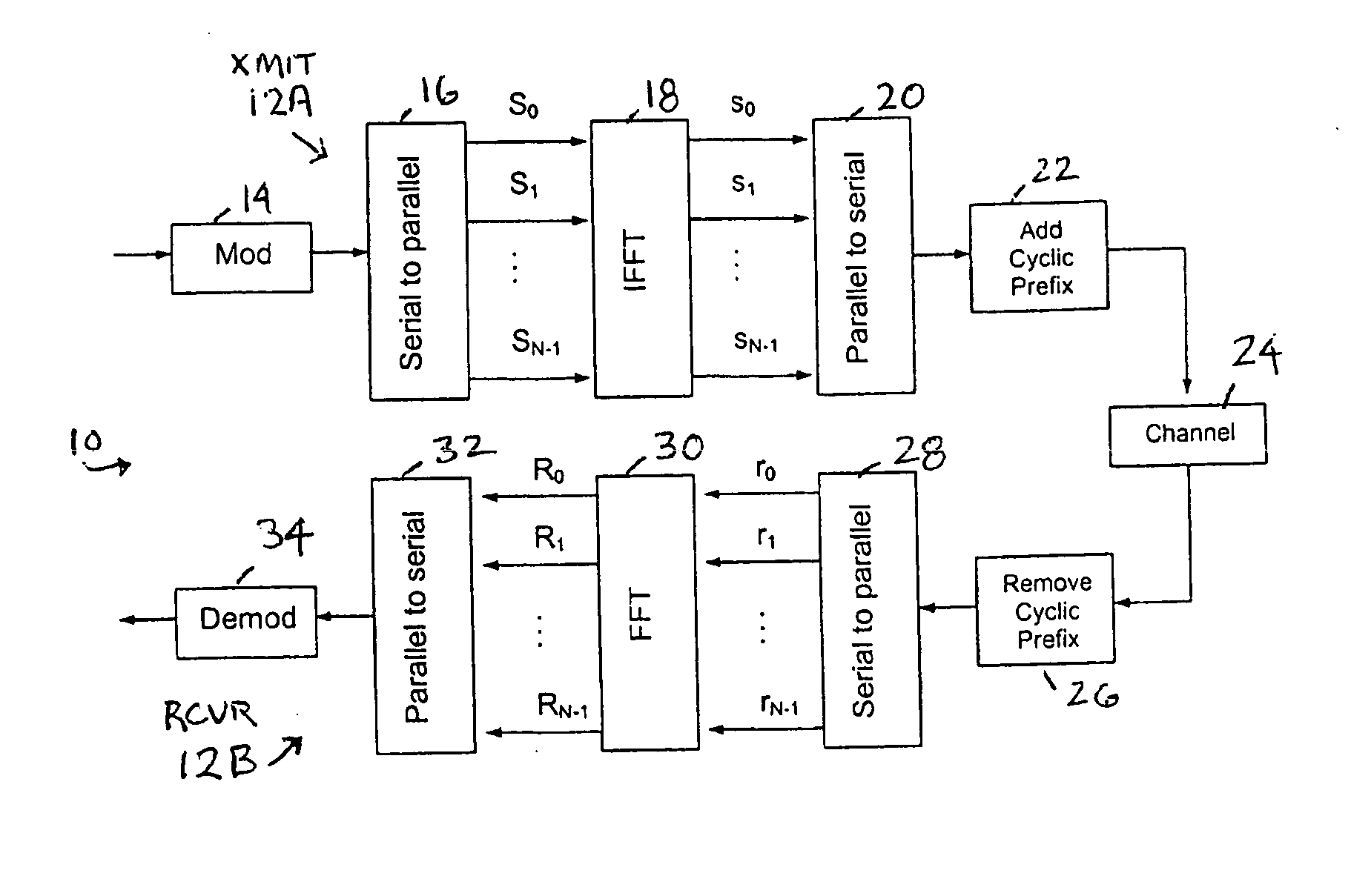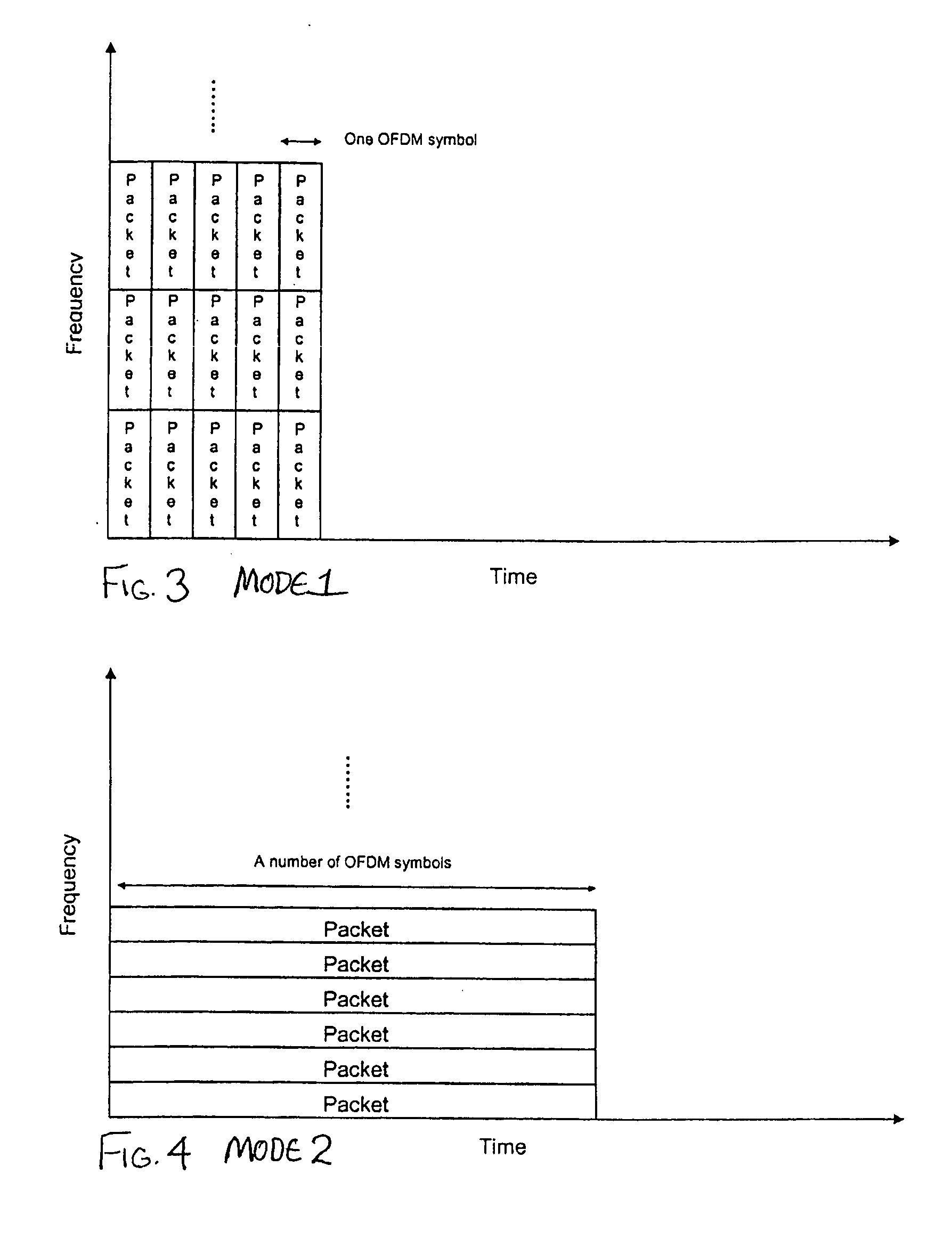Method and apparatus providing adaptive learning in an orthogonal frequency division multiplex communication system
a communication system and frequency division technology, applied in the field of wireless communication systems, can solve the problems of not optimizing data throughput, not maximizing data throughput, and requiring optimized net throughput,
- Summary
- Abstract
- Description
- Claims
- Application Information
AI Technical Summary
Benefits of technology
Problems solved by technology
Method used
Image
Examples
first embodiment
FIG. 20 is a logic flow diagram that illustrates a method of operating the stochastic learning automaton system, in mode 1 operation, in accordance with this invention;
FIG. 21 is a logic flow diagram that illustrates a method of operating the stochastic learning automaton system, in mode 2 operation, further in accordance with the first embodiment of this invention;
FIG. 22 is a logic flow diagram that illustrates a method of operating the stochastic learning automaton system, in mode 1 operation, in accordance with a second, enhanced embodiment of this invention that provides for faster convergence during the learning period;
second embodiment
FIG. 23 is a logic flow diagram that illustrates a method of operating the stochastic learning automaton system, in mode 2 operation, further in accordance with this invention;
FIG. 24 is a graph showing candidate thresholds and the resulting active regions in mode 2, further in accordance with the second embodiment of this invention;
FIG. 25 is a graph showing a probability convergence curve of the desired action, mode 1, in accordance with a second, enhanced adaptive learning embodiment of this invention;
FIG. 26 is a graph showing a probability convergence curve of the desired action, mode 2 in accordance with the second, enhanced adaptive learning embodiment of this invention;
FIG. 27 is a graph showing an average loss in TP, while the learning scheme converges, mode 1, in accordance with the second, enhanced adaptive learning embodiment of this invention; and
FIG. 28 is a graph showing an average loss in TP, while the learning scheme converges, mode 2, in accordance with the sec...
PUM
 Login to View More
Login to View More Abstract
Description
Claims
Application Information
 Login to View More
Login to View More - R&D
- Intellectual Property
- Life Sciences
- Materials
- Tech Scout
- Unparalleled Data Quality
- Higher Quality Content
- 60% Fewer Hallucinations
Browse by: Latest US Patents, China's latest patents, Technical Efficacy Thesaurus, Application Domain, Technology Topic, Popular Technical Reports.
© 2025 PatSnap. All rights reserved.Legal|Privacy policy|Modern Slavery Act Transparency Statement|Sitemap|About US| Contact US: help@patsnap.com



